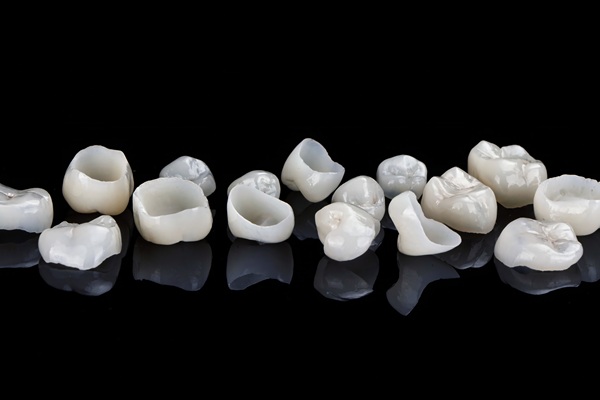Help Protect Your Teeth with Dental Restorations

As you age, your teeth face challenges from numerous issues. Daily wear from chewing food or stress-related grinding, gum problems from bacteria build-up, and tooth damage from the foods and drinks you consume all play a role in the deterioration of your smile.
You and your dentist share a common goal: caring for and preserving your natural teeth. Through dental restorations, missing teeth can be replaced, cavities can be prevented, and your bite's function can be maximized.
Over the years, the dental restoration options available have increased and their level of effectiveness has greatly improved. There are numerous alternatives available to address your dental health concerns, ranging from minimally invasive and low-cost to high-tech, complex, and more expensive. When you make an appointment with your dentist to discuss restoration options, you should be armed with the basic information.
Types of dental restoration
Modern technology has greatly improved the options for tooth restorations, leaving you with numerous options for repairing decayed, damaged, worn, or missing teeth in an effort to restore a beautiful smile and healthy bite. Based on the needs of your teeth, your dentist may recommend one of the following types of procedures.
Direct restoration procedures
The most common type of direct tooth restoration is dental fillings. This can be completed in a single office visit and involves preparing the tooth cavity and inserting a filling. The location of the cavity is the biggest factor in choosing the filling material. Glass or resin ionomers provide appropriate color options for the front of the mouth, but they are generally used near the tooth root and in places not used for heavy stress from chewing. Silver amalgam fillings provide a more durable option for the molars.
Indirect restoration procedures
Indirect dental restorations include customized replacement teeth such as crowns, inlays, or onlays. Crowns are tooth-shaped caps that cover the whole chewing surface of the tooth, while inlays are placed within the cusp and onlays cover the tip of the tooth, including a portion of the chewing surface. Indirect restoration procedures include additional office visits to allow time for customized fittings and fabrications. There are several materials that you and your dentist can choose from, based on the location of the problem tooth, your preferences, and your budget needs. Gold is still often used for inlays, but porcelain and composite resins that match the natural tooth color are popular options for those concerned about keeping their teeth looking white.
What to ask the dentist
When you make an appointment for dental restorations, you should expect to undergo an initial exam and consultation. This is the time to ask questions so you can be completely prepared for both the procedure and the results. Here are some suggestions of what to ask your dentist:
- What are my options? Your options for restoring damaged teeth depend on several factors, so ask your dentist to discuss all of the options and alternatives.
- How long does the process take? The time required for dental restorations varies depending on the chosen treatment. Bridges, crowns, and partial dentures are relatively quick processes that can be completed in one or two visits spread over a couple of weeks. More complex procedures like implants can often require three to six months. A restoration that includes tooth removal sometimes necessitates a waiting period of up to three months for the mouth to completely heal before undergoing more procedures.
- What are the risks? Any medical or dental treatment is likely to carry some level of risk. Talk with your dentist about your situation and the potential problems that could occur with each procedure.
- How much will it cost? There are options for dental restoration to fit every budget. Bondings and fillings tend to be on the lower end of the expense continuum; veneers and implants are more involved procedures and therefore cost more.
- How long do the results last? Depending on the procedure chosen, your dental restoration could last from 10-25 years. Implants can last forever if properly maintained. Veneers have a lifespan of around 25 years, and bondings, crowns, and fillings can be expected to last for up to ten years.
Conclusion
If your smile is no longer what you want it to be, it is important to know that a healthy smile is never out of reach. Worn, damaged, and missing teeth can be repaired or replaced with proper dental restoration procedures. The possibilities are numerous with options to fit any condition or budget. Talk with your dentist today about the right tooth restoration choices to meet your needs.
Request an appointment here: https://smilesdental.com or call Smiles Dental Care at (650) 563-1180 for an appointment in our Mountain View office.
Check out what others are saying about our dental services on Yelp: Dental Restorations in Mountain View, CA.
Recent Posts
At some time or another, most individuals will need dental restorations. Restoring teeth is necessary when the teeth are in poor condition due to decay or a lack of proper oral care. Modern dentistry offers a wide variety of options for dental restorations.There are so many fantastic alternatives when it comes to dental restorations that…
One of the most common reasons you might need to see your dentist for dental inlay treatment is if you suffer from periodontal disease. This condition damages the tissues and bones that hold your teeth in place, and it can lead to the eventual loss of those teeth if left untreated. As such, some dentists…
An onlay or an inlay are two options that a dentist might explore if the decay on a tooth is too severe to be treated with fillings. Also called partial crowns, these indirect restorations are made from impressions of damaged teeth. They are cemented into place and provide a more durable solution than fillings.Here are…
A dental onlay is a different treatment than you may be used to. It could be a more effective solution to your oral health and cosmetic needs than a filling or crown. Tooth decay and damage such as a chip, crack, or fracture can cause pain and lead to serious infections. These conditions can also…


